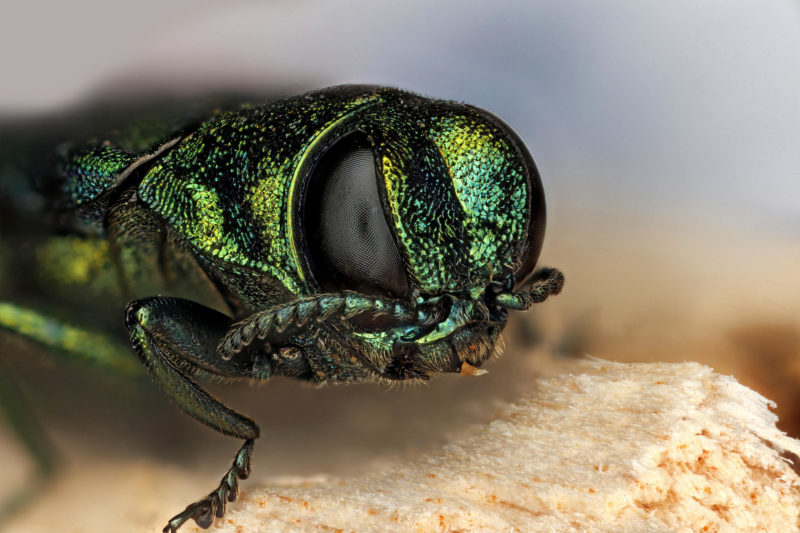From KUT:
Somewhere in the forests of Northeast Texas there is a tree, or maybe group of trees, where an invasive species is breeding. It’s a beetle called the emerald ash borer (EAB), and it’s wiped out forests of ash trees since it arrived in the U.S. from Asia a few decades ago. If unchecked, it has the potential to decimate trees in Texas, but there’s a plan to fight the ash borer.
And, it sounds almost like something from a horror movie.
Ben Slager helps breed them at the EAB Biological Control rearing facility in Michigan. One type is called the Spathius agrilli.
“The way that it works is it finds an infested ash tree, and when it gets on that ash tree its antennae start to go crazy on the bark of that tree,” he says.
Seeking the vibrations of EAB larvae in the tree, the wasps use their stingers to puncture the tree bark.
“So, its kind of like a hydraulic drill going through the bark,” Slager says. “And, as soon as it gets through there, it lays it eggs on the larvae.”
Those eggs hatch, and then they eat their way through the larvae, killing the borers.
“I think that it’s fodder for a horror movie someday,” Slager admits.
But, a lot of people – like Paul Chaloux of the USDA’s national EAB program – say it’s as necessary as it is creepy.
“Last year, we released just over a million of these wasps in multiple states in the impacted area,” Chaloux says.
He says the wasps might be the answer to saving America’s ash trees. That’s because they come from the same regions of Asia as EAB, so they evolved to target it. Of course, tests have shown a few instances in which wasps lay their eggs on other native borer beetles.
“But, again, the attack rates even on those relatives of EAB are very, very, very low,” Chaloux says. “And we certainly wouldn’t expect any impacts on the populations of those other species.”
Now that four EAB have been caught in traps in Texas, Shane Harrington of the Texas A&M Forest Service says the wasps will probably be released here, too. But, before that happens, officials need to pinpoint where in Texas the borers are breeding.
“We suspect that there is an infected tree somewhere around the detecting site, but because of weather related issues we have not been able to isolate that one tree yet,” Harrington says.
To stop the spread of the EAB, he asks people to stop moving firewood from one forest to another – the beetles can hitch a ride on the wood.
If those killer wasps are released in Texas, Slager says he wants people to know they do not sting people.
“From our perspective, it’s a very good thing. From the EABs perspective, its definitely a horror movie,” he says. “Theyre the guy that’s got left behind.”















